Reviews
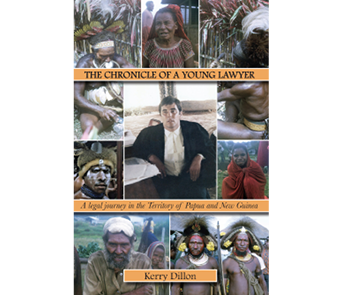
The Chronicle of
a Young Lawyer:
A legal journey in the
Territory of Papua and New Guinea
By Kerry Dillon (Hybrid Publishers, 2020; 363 pages; ISBN: 9781925736410; $35)
Available from Booktopia & all good bookstores, www.hybridpublishers.com.au
and as
an e-book from Amazon, Kobo, Google Books and Apple iBookstore

The Office of the Public Solicitor (Pub Sols) began in the Territory of Papua and New Guinea (TPNG) in 1958 and was guided from then almost to the independence of PNG in 1975 by the late W A (Peter) Lalor, to whom this book is dedicated. The author, Kerry Dillon, was one of the many lawyers who contributed over those 17 years.
The framers of the Constitution of the Independent State of Papua New Guinea (PNG) rightly believed that the Public Solicitor’s Office had played such an important role in the development of the rule of law and access to justice and was such an important part of the emerging nation’s legal system that the Constitution established the Public Solicitor as a Law Officer of PNG (Articles 156 and 176) and provided independence and tenure (Articles 177 and 178).
This is an important book, because the information it provides is not available elsewhere in convenient form. It is well-researched and illustrated with photographs. It is a riveting and enjoyable read for a general audience, as well as for lawyers and persons with connections with PNG for whom it will strike various chords. It is, as the title suggests, a chronicle by Kerry Dillon (from Tasmania) of his two years as a young lawyer in TPNG in 1969-71. It tells Dillon’s personal and professional story of a couple of months in the Crown Law Department and the rest of his contract term in Pub Sols, travelling throughout the Territory on circuit with the (then) Supreme Court, defending the locals. It was not all work, of course, but Dillon deals with social life sparingly (perhaps wisely).
It was a time when Australian law (and a little UK law) applied in PNG, with the Queensland Criminal Code forming the basis of criminal law. Judges and lawyers came from all parts of Australia and New Zealand on contract to judge, to prosecute and to defend – and to work in other areas of law in the developing nation. The judges were from the highest strata of the profession in their home jurisdictions and maintained the highest standards of behaviour on and off the bench. They applied the law without fear or favour, affection or ill-will. Most of the lawyers employed there at the time went on to great things elsewhere – from NSW to mention a few: the bench (the Hon Michael Adams QC, retired NSW Supreme Court Justice who provided the Foreword to this book; Sir Warwick Andrew), the solicitors’ branch of the profession (Kevin Broadley of Herbert Smith Freehills), the Bar and DPP (Nicholas Cowdery AO QC) and academe and tribunals (Nick O’Neill).
This book, in telling the stories of Dillon’s many experiences in the law in all parts of TPNG, illustrates and underlines the enormous contribution made by these professionals to the application of the rule of law in a slightly wild jurisdiction where payback killings were common in some areas and where the death penalty was available. Despite temptations that were clearly present, the letter and spirit of the inherited (UK and Australian) law were always observed, which provided the opportunity for young lawyers to be imbued with principle and diligent application. That industry, in turn, showed the way for the PNG lawyers and legal systems of the newly independent PNG and provided a great foundation for what they would choose to develop (even if it has not always been successfully reflected in more recent times).
Dillon takes the reader on circuit with him, providing the background and some history for each circuit, describing many of the cases in which he was involved and assessing their resolution. In addition to descriptions of the linguistic, procedural and other challenges for both the young lawyer and the legal system, there are great insights into the customs, practices and relationships of the local people in different areas. Along the way there is plenty of local colour and some anecdotes about colleagues. The perils of commuting in small aircraft are well described. After his own history and setting the scene, Dillon takes us to the Sepik, Western Highlands, Rabaul, Bougainville, Madang, Eastern Highlands, the Morobe District, Western Papua and Port Moresby at various times – on a tour of the whole country, in fact.
But this is much more than a diary. Always in the background are the politics of a developing nation moving towards independence and Australia’s role in that process. The stories of unrest on the Gazelle Peninsular (Rabaul) – arising from agitation for proper land rights and political representation by the Mataungan Association and some future leading politicians – and Dillon’s role in representing those charged in 1969 and 1970, presage the murder of Jack Emanuel, District Commissioner, in August 1971. The manoeuvring behind the scenes by the Administrator, David Hay, with John Gorton and the later pressure also on Gough Whitlam to grant independence are described with new insights.
Towards the end of the book another hugely significant contribution to Australia’s development is also shown to have had some initial impetus and ongoing support from developments in PNG. Land title claims were a vital part of the development of PNG to ensure social acceptance and support. The briefing by Peter Lalor of then junior counsel from Melbourne, the late Ron Castan AM QC, in the Town of Lae case no doubt served the latter well when he appeared in the Mabo case in the High Court. It is an intriguing link that Dillon explores sensitively and well, assisted greatly by Madeline Campbell who worked in Pub Sols mainly on land cases.
Some TPNG survivors in the profession in NSW – and elsewhere – will remember some of the names mentioned in the book (no, there is not an Index, but there is an Afterword that refers to them). Everyone in the Australian profession will recognise in their own jurisdictions the principles and procedures that were diligently applied and followed by the young lawyers in TPNG, guided by their very capable and experienced seniors, as described in the book. Kerry Dillon was a fine example of those young lawyers, as his subsequent career (also described in the book) amply illustrates.
Nicholas Cowdery AO QC FAAL1
ENDNOTES
1 Nicholas Cowdery overlapped with Kerry Dillon in TPNG, arriving in 1971 and leaving in 1975. Like Dillon he spent a couple of months initially in the Crown Law Department and moved to Pub Sols. He was based in Port Moresby, Rabaul (including at the time of the Jack Emanuel murder trial in which NSW and Queensland counsel were briefed), Port Moresby again and Lae, where he established the branch office of Pub Sols. He travelled throughout the country on circuit and can identify with many of Dillon’s recounted experiences. He was also counsel in a land claim case in Port Moresby. He is mentioned in passing at pages 26 and 338. [He is the author of Getting Justice Wrong: myths, media and crime (Allen & Unwin, 2001) and Frank and Fearless (with Rachael Jane Chin; New South, 2019).]
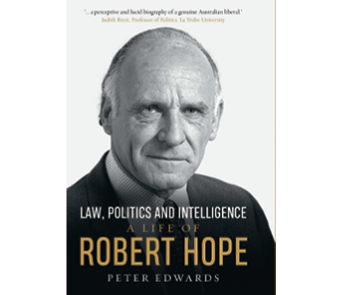
Law, Politics and Intelligence
A Life of Robert Hope
By Peter Edwards

On 6 March 2020 in the President’s Court Her Excellency the Honourable Margaret Beazley AC QC, Governor of New South Wales, launched Peter Edwards’ biography of Robert Marsden Hope. Here, Peter writes for Bar News on the enduring legacy of Justice Hope’s inquiries on Australian intelligence agencies. Edwards’ book is not only a valuable historical record, but also highly relevant to current debates on the extent of the agencies’ compulsory questioning powers, online intelligence, and largely secret prosecutions. |
How much can the biography of a Supreme Court judge of the 1970s and 1980s tell us about the issues of the 2020s? A great deal, if that judge is Robert Marsden Hope.
Justice Hope ended twenty years of service on the NSW Supreme Court as the senior puisne judge of the Court of Appeal, having narrowly missed appointment to the High Court, and later as President of the Appeal Court.
But his greatest legacy was to be, in the words of former Commonwealth Attorney-General Gareth Evans, one of ‘the giants of Australian public policy and governance’. And events in recent years have served to underline the scale and the continuing relevance of his achievement.
Between the mid 1970s and the mid 1980s, three successive Prime Ministers – Gough Whitlam, Malcolm Fraser and Bob Hawke – appointed Justice Hope to conduct inquiries, two of which were royal commissions, which totally reconstructed the Australian intelligence community. Starting from first principles, and proceeding into great detail, Hope prescribed what agencies Australia should have; what each should do – and no less importantly, what it should not do; how each one should operate within its charter, within the law, and with ‘propriety’; how they should strike the appropriate balance between secrecy and transparency; and what relations they should have with each other, with ministers, with departments and agencies, and with the international partners we now call the Five Eyes.
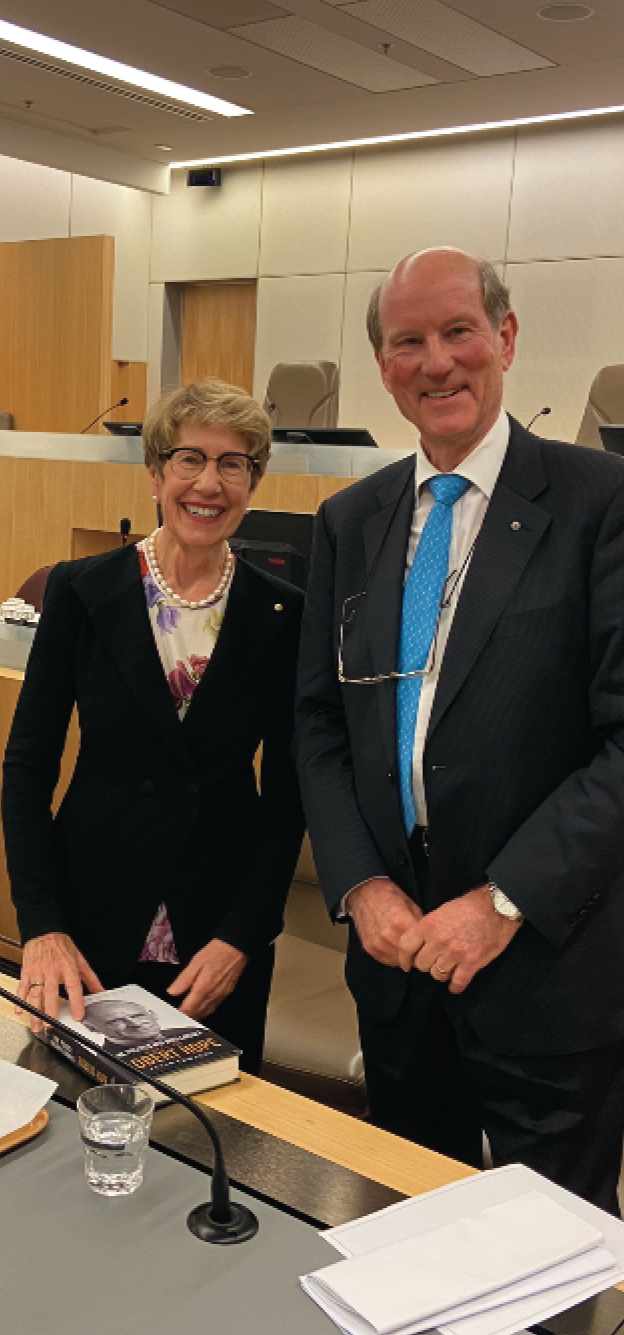
The Hon Margaret Beazley
with Peter Edwards
At the time the only agency of which the public was aware was the Australian Security Intelligence Organisation (ASIO). As its own official history has recognised, ASIO at the time was widely distrusted, because it was blatantly partisan, focussing its attention on domestic subversion instead of foreign espionage. Some politicians and activists campaigned for its abolition. Hope took the more difficult but constructive path of setting out the legislation, structures and operational doctrines that would ensure that ASIO operated effectively to protect national security in a non-partisan and accountable manner.
Similarly, he recommended that two agencies that were not even publicly acknowledged, the Australian Secret Intelligence Service (ASIS) and the Defence Signals Directorate (DSD), should not only continue to exist and be publicly acknowledged but also be given expanded roles, under legislation and accountability measures which set clear limits on their powers and operations.
Fundamental to all Hope’s recommendations was the relationship between effectiveness in protecting national security and accountability for the protection of civil liberties. He recommended a number of oversight mechanisms, the most significant of which was the office of the Inspector-General of Intelligence and Security.
National security and civil liberties, as Hope perceived, are not polar opposites that need to be balanced, but mutually supportive. Intelligence and security agencies cannot be effective in protecting national security unless the public has confidence that they are accountable for their respect for civil liberties.
The most significant measure of Hope’s success was the gradual but steady growth of public trust in ASIO and the other agencies during four decades after his first major reports in the 1970s, as governments of all persuasions consistently, albeit slowly, implemented most of Hope’s recommendations, often in the face of bureaucratic opposition.
In recent years, before the COVID-19 pandemic swept almost all other considerations aside, a number of incidents raised fresh concerns about the structures and operations of the intelligence and security agencies, especially their respect for the civil liberties and legal norms. A former military intelligence officer, identified only as Witness J, was convicted in a secret trial. A former ASIS officer, known as Witness K, and his lawyer are currently facing largely secret prosecutions. The Australian Federal Police made highly publicised raids on the offices of the ABC and the home of a News Corp journalist. Governments have introduced a large number of amendments to national security legislation, many of which granted executive powers to ASIO. Whatever the individual merits of each of these matters, their combination is troubling.
It is probably no coincidence that many of these events occurred as what might be called ‘the Hope model’ for the intelligence community has been challenged, particularly by the establishment in 2017 of the Department of Home Affairs, which brings several intelligence agencies, including ASIO, as well as the Australian Federal Police and the Border Force into one powerful portfolio.
This conflicts with many of Hope’s fundamental principles. He emphasised that the intelligence agencies should serve ‘government as a whole’, and not be dominated by one or two policy departments. ASIO, he said, should not be given executive powers and should be clearly separated from law enforcement bodies. The Department of Home Affairs was said to be modelled on Britain’s Home Office, after an earlier proposal, modelled on the US Department of Homeland Security, had been rejected. Hope designed an intelligence community for Australian conditions, deliberately rejecting many British and American models.
It is likely that, for some time yet, there will be tension and conflict between the Hope model and its challengers. For that reason, I suggest that the book will provide valuable background information for the participants in, and observers of, the debate over the role and powers of the intelligence and security agencies.
My aim in writing the biography was to bring out not only the legal and political issues but also the personalities and values that have helped shape important policy decisions. The book makes, I hope, a useful contribution to the history of the NSW legal profession: and the accounts of Hope’s appointments, and non-appointments, to high judicial office may be of some interest. The recent release of the palace letters renews the relevance of Hope’s relationship with Sir John Kerr, first as Chief Justice and then as Governor-General, and his views on the dismissal of the Whitlam government. The book also offers some reflections on the appointment of judges as royal commissioners, a subject on which the New South Wales and Victorian judiciaries have long held contrasting positions.
As an historian of public policy, with no legal qualifications, I am deeply grateful for the support of the NSW Bar Association, and many of its individual members, from beginning to end of an extended project. The late Philip Selth was an enthusiastic supporter from the outset, and I was delighted that he, as he put it, ‘hung on long enough’ to attend the function, kindly organised by the NSWBA, at the Supreme Court when Her Excellency the Governor, the Hon. Margaret Beazley AC QC, launched the book in one of the courtrooms over which she had until recently presided as President of the Court of Appeal.
Several distinguished lawyers, including the last two chief justices of the High Court, have written generous endorsements. I am especially grateful for the comments of Bret Walker SC:
Peter Edwards tells the absorbing life and engagements of R M Hope, the outsider to the world of intelligence and security to whom most is owed for the reform of Australia’s secret agencies. In its breadth, with its detail, and without rose-tinted-glasses, this is the book that this most capable, valuable and complex man warrants. The social history of a special generation of lawyers in service of the public that it presents, focussing on Hope, is an exceptional achievement.
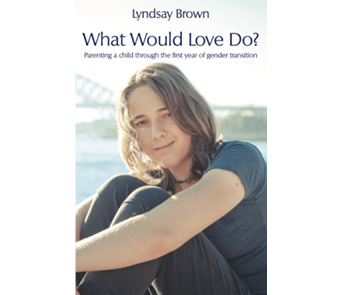
What Would Love Do? Parenting a child through the first year of gender transition
Dr Lyndsay Brown
(Ginninderra Press, 2020)

The journey started at 8.15 pm on 25 October 2017 when Olivia, then 13 years old, revealed to her twin brother a secret with which she had been living for years: that she was transgender. Olivia was experiencing the tiger of gender dysphoria: the dissonance between the gender assigned at birth (with the associated sex characteristics) and a person’s self-perceived gender identity. The storm or tsunami of gender dysphoria can occasion severe anxiety, worthlessness, debilitating self-hatred, depression, and suicidal ideation. It can be impossible for a trans person not to see themselves as they once were, so aligning the inner and outer selves demands a fundamental revolution.
Olivia’s mother, Lyndsay is the author of this book. She describes her initial shock, unpreparedness, uncertainty and sadness at losing her parental hopes and dreams for her brilliant ‘son’, as well as her fears of a marginalised and stigmatised future life for her daughter who would likely have to deal with an often transphobic world. Lyndsay describes her intense feelings of loss as her accepted world view became 'scarred and bleeding, numb and silent'. She takes us through the journey she went through until, a year after Olivia’s explosive revelation, she is able to express wonder at Olivia’s personal liberation and extraordinary courage, able to acknowledge that 'I was the parent of a trans child and that it was OK'.
When a child transitions, then family life irrevocably changes. Parents, siblings, relatives, friends and others react differently and not always positively. Inter-familial relationships are tested, parental loads changed, memories and senses of individual self are erased, and collective family identities fundamentally altered.
The uncharted task of constructing a gender identity involves 'a perilous journey in a perilous world'. As Paulo Coelho has remarked, a personal journey is 'more about unbecoming everything that isn’t really you so that you can be who you were meant to be in the first place'. Gender transitioning is a steep learning curve on both a social level (involving presentation, behaviour and speech) and a physical one (involving hormone treatment, medical procedures and changing identification documents). Pursuing the 'chemical expression' of one’s true self also exposes the barriers posed by medical regulation and practice ('gatekeeping').
Olivia chose to live authentically on a full-time basis, thereby building resilience and avoiding the psychological pain of secretly closeting her trans identity ('going stealth'). The book traces traumatic school bullying and exhaustive hypervigilance in social settings for intolerance and the potentially transphobic ‘curious’ gazes of strangers in the streets. Through all of this, Olivia established herself as an independent adolescent, built alliances within her peer network, continued to shine in her academic world, celebrated her validation during Mardi Gras, and demonstrated courage for being her true, authentic self.
If parenting is ordinarily about self-sacrifice, then trans parents must dig deeply. There is no sense of whether or when things will get easier. Parents must be prepared for unpredictable, lengthy and sometimes untriggered meltdowns or 'hormonal hurricanes' when a child becomes miserable, rageful, tearful, despairing and hostile, terrified of potential rejection everywhere. The dominating feeling a trans parent becomes accustomed to is the omnipresent fear of transphobic violence against their child for being who they are.
This book offers many practical tips for parents navigating challenges: be open; get educated; network with other trans parents; provide the freedom to customise a child’s own version of themselves; don’t over-accommodate needs; identify and engage with positive trans role models; provide comforting pets; demonstrate unconditional love and acceptance; and be a constant accepting presence. Although being trans is not central to their identity, a child’s existence is fundamentally denied by accidental or intended misgendering (e.g., incorrect pronouns) or using former names ('deadnaming'). Lyndsay documents how, although protective choices and strategically designing safe and anonymous environments can often entail substantial financial costs, trans parents can access support services from multiple medical professionals and organisations including the Gender Centre, online trans parent support groups and inclusive and diverse school settings.
Lyndsay’s experiences in unfamiliar territory are useful for getting 'over the hump' when parenting a child who is significantly different. It takes some time before mourning for a 'lost' child ceases: as a rule of thumb, around 6 months is required to process and internalise a new gender for every 2 years a parent has known their child in their former gender. The early stages of gender transitioning are especially difficult, but the journey is life-long and readers will hunger for an updated account.
What this book reveals is that the multiple unexpected challenges to a parent’s self-perception, behaviour and parental skills can be positively life changing for a trans parent. Trans parenting offers a heightened awareness of pervasive but covert gendered socialisation, the influence of controlling aesthetic standards and the binary 'other'. The transitioning process ought to be normalised in Australia, particularly given an increasingly open transgender community 'living very ordinary ['invisible'] lives as trans people, with lovers and partners, friends and family, and working in rewarding jobs'.
In a final chapter, we hear Olivia’s voice. She encourages other trans children not to lose sight of who they are and not to change in order to fit in but instead to find their passions and to find self-love. Trans children are self-empowered individuals who boldly follow their dreams to be who they really wish to be. That is a valuable lesson for all parents.
Stephen Tully
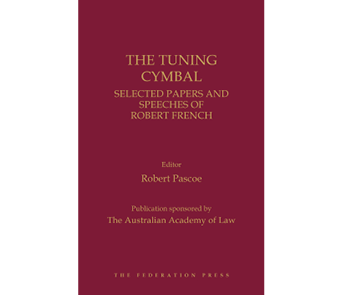
Tuning Cymbal:
Selected Papers and Speeches of Robert French
Edited by Robert Pascoe and published by The Federation Press

The Tuning Cymbal: Selected Papers and Speeches of Robert French, edited by Robert Pascoe and published by The Federation Press, is a noteworthy compilation of the ideas, reflections and, at times, subtle advocacy of one of Australia’s most prolific jurists. It is a collection of 29 pieces which, as Kevin Lindgren explains in the publication’s foreword, are drawn from no fewer than 94 published articles and speeches, 24 book chapters and 214 unpublished conference and seminar papers. Mirroring the broad intellectual interests of the former Chief Justice, the selected articles are grouped into diverse sets of topics, ranging from Indigenous issues through to competition law and legal education.
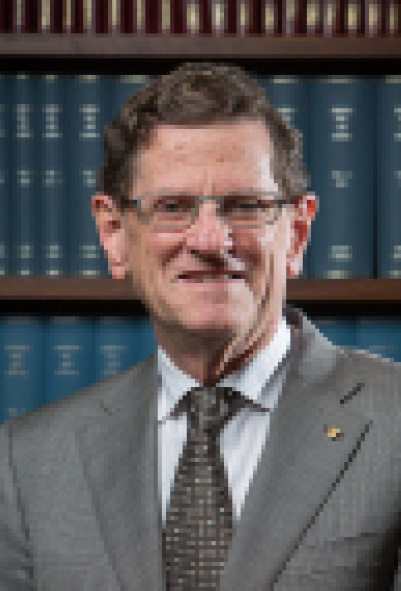
The Hon Robert French AC
Critical to the success of this collection is the adoption of a format in which the articles in each topic grouping are prefaced by an introductory comment from an expert in the field. The structure was adopted by Pascoe at French’s request in order to avoid the tedium that otherwise infects many edited collections of articles and speeches. It produces a profound effect. The comments resonate against the articles that follow in a manner that is not only befitting of the title of the book, but which also serves as an archetype for respectful academic engagement – informed, considerate, but not always in agreement. Thus, for example, while French asserts in his examination of Indigenous recognition and sovereignty in Chapter 2 that the Noongar Settlement – a piece of Western Australian legislation that acknowledges the Noongar people as the traditional owners of the Noongar lands – is a species of a regional treaty, Megan Davis rejects that notion in her corresponding comment. The dialogue between these two opposing views provides the reader with a glimpse of the deeply contested nature of the concepts that French has, throughout his legal career, grappled with. Indeed, in paying regard to his spirited and often prescient contributions, Professor Davis concludes her comment by acknowledging that French’s legal writing has 'provided great succour to Indigenous leaders' and has influenced the development of critical aspects of the constitutional reform agenda, including the Uluru Statement.
In Anne Twomey’s examination of the public law section of the collection, the reader is treated to an insightful account of one of French’s most influential constitutional papers: 'The Constitution and the People'. Professor Twomey observes that the paper presented a more layered depiction of the concept of popular sovereignty than had been, until its publication in 2003, the prevailing notion. In doing so, French engaged with difficult questions, including defining 'the people' of the Commonwealth against a history in which certain groups of people had been excluded from the meaning of that term on the basis of their race or sex. French also sought, in the same paper, to reconcile the tensions between Indigenous rights arising out of cultural relationships with the land with the liberal concept of equality before the law. While Professor Twomey suggests that the compromise French reached – to suggest that there could be recognition of pre-existing traditions and customs without conferral of special rights or privileges – may have been optimistic, she also acknowledges that it is an argument that continues to resonate.
In his commentary on the chapters dealing with the judicial system, Chief Justice Tom Bathurst recognises the important insights that French has offered in response to the increasing complexity besetting modern litigation and the judicial task in the 21st century. One of those is the novel idea of a 'judicial exchange' program between members of different jurisdictions, aimed at avoiding geographic parochialism. Chief Justice Bathurst sees merit in such an idea as an aspect of cooperative federalism, even if its practical implementation has been stalled. On the other hand, his Honour expresses greater reservation about French’s suggestion that a national intermediate court of appeal is required. While the justification offered by French is that such a court might promote interjurisdictional comity, Bathurst CJ is far more sceptical of the radical 'ambition' underpinning it. Nonetheless, his Honour does not dismiss the idea outright as an 'outdated curio', but rather notes that it typifies a commitment to a national view of the judiciary which remains relevant in the face of an ever-integrated Australian economy.
Lindgren observes that French was reluctant to adopt 'A Well Tuned Cymbal' as a suggested title for this collection on the basis that it would import a notion that his journey of learning had concluded. This sense of humility and the curiosity of mind of which it speaks has produced a body of work that is a delight for the engaged reader. While many of the concepts and ideas presented have been and will continue to be respectfully contested, it is through that contest that the resolve of our institutions is gradually strengthened. At a moment in time when the foundations of democracy are under siege in many corners of the world, this collection is a testament to that invaluable legacy.
Shipra Chordia
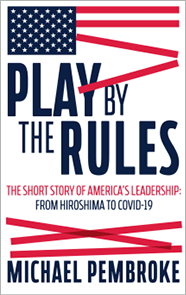
Play by the Rules
Michael Pembroke:

In Play by the Rules, subtitled The Short Story of America’s Leadership – from Hiroshima to COVID-19, Michael Pembroke charts the rise and fall of America’s moral leadership on the world stage. The Preface is dated Easter 2020 and, as is clear from the subtitle, it describes events that are still continuing. This is a fast-moving area and a second edition may well be required to incorporate the likely impact of the American election which, as I write this review, is only a few days away.
Pembroke’s last book, Korea: Where the American Century Began, was a detailed account of the Korean war, but put in the broader context of America’s repeated mistakes in its self-appointed role as the world’s policeman. This book describes the various world events and conflicts in which America has been involved since 1945, but in a less detailed way and in order to illustrate what Pembroke sees as a decline in ‘the high standards and treasured principles’ that it first espoused, albeit all too briefly, at the conclusion of the Second World War.
Even before America’s entry into the Second World War, President Franklin Roosevelt had ended its isolationism and was taking steps to devise how the world should be once the war was over. In his January 1941 State of the Union address, Roosevelt propounded four fundamental freedoms for people ‘everywhere in the world’, including freedom from fear of national aggression. In the Atlantic Charter he signed with Churchill in August 1941, there was expressed agreement to ‘the establishment of a wider and permanent system of general security’, including as a cardinal principle respect for ‘the right of all peoples to choose the form of government under which they will live’. Consistent with this, the fifty signatories to the United Nations charter in June 1945, including the United States, agreed to give up their right to resort to war other than in self-defence and to be constrained by international law.
As the American jurist Andrew Jackson, who stepped aside from the Supreme Court to become the United States principal representative and chief prosecutor at Nuremberg, put it in his opening address:
It is not enough that we restore peace…All else will fail unless we devise instruments of adjustment, adjudication, and conciliation, so reasonable and acceptable to the masses of people that future governments will have always an honourable alternative to war.
As Pembroke put it in a recent opinion piece in the South China Morning Post:
The post-war period was supposed to be the dawn of a new age, led by a generous and prosperous America. The global leadership of the United States was unrivalled and paramount. The UN Charter was clear. Unilateral resort to war and armed intervention in sovereign countries were replaced by collective decision-making in the Security Council on behalf of all member states.
Unfortunately, such statements were not consistent with the idea of American exceptionalism, involving a ‘divine mission to deliver not only success for itself but global salvation’; and presented difficulties for the United States when other countries did not share its cultural values and political system.
America’s capacity for what Pembroke describes as ‘hubris and moral compromise’ was demonstrated even at that time by America’s insistence upon predominant board representation and special veto powers in the establishment of the International Monetary Fund and the World Bank, rejecting out of hand John Maynard Keynes’ proposals for a more equitable system.
Roosevelt’s chosen successor was Henry Wallace, but the political establishment would not accept his liberal views and conciliatory attitude to Soviet Russia. Instead Roosevelt was replaced by Truman and a guiding principle of a fear of communism and confrontation with Russia.
Pembroke then moves from the detonation of atomic bombs over Hiroshima and Nagasaki (to ‘make Russia more manageable in Europe’), through the Cold War arms race, CIA coups and interventions in Iran, Guatemala, Vietnam, Chile and Iraq and into military conflicts in Vietnam, Korea, Afghanistan and Iraq. There are also many examples of America’s selective adherence to the rule of law, which can be seen in policies such as extraordinary rendition. Pembroke cites many acts inconsistent with America’s public pronouncements that had led to the formation of the new world order in 1945.
Voices of dissent inside America are recorded (with detailed endnotes), but these have had little effect.
The events Pembroke describes present a powerful rejection of Henry Wallace’s philosophy:
Some have spoken of the ‘American Century’. I say…the century…which will come of this war – can and must be the century of the common man…No nation will have the God-given right to exploit other nations…there must be neither economic nor military imperialism.
Pembroke’s review of America’s involvement on the world stage continues right up to the present day, noting an increased unilateralism demonstrated by actions such as its refusal to ratify a single UN convention or treaty since 1994, the failure to ratify the Convention on the Rights of the Child (being the only country to fail to do so), the failure to ratify the international covenant that gives the Universal Declaration of Human Rights legal effect (together with Palau, Cuba and Comoros), its withdrawal from the jurisdiction of the International Court of Justice, its opposition to the International Criminal Court and its recent withdrawal from the Paris Climate Agreement and the UN Human Rights Council.
Pembroke concludes by analysing the rise of China as the major player on the world stage through economic rather than military means. It is clear that he does not share America’s negative attitude expressed towards China. He quotes with apparent approval from the Singaporean Prime Minister Lee Hsien Loong:
China may be communist in political structure, but it has adopted market principles in many areas. The Soviets sought to overturn the world order. But China has benefitted from, and by and large worked within, the framework of existing multilateral institutions. During the Cold War, the Communist bloc sought to export Communism to the world. But China today is not attempting to turn other countries Communist.
Pembroke’s opinion piece in the South China Morning Post last week summarised the views expressed in this book and was headed:
Why Australia must steer clear of America’s moral crusade against China
- America’s global standing is in decline, on the back of its single-minded pursuit of military might and consistent flouting of the rules-based order it helped create
- Anti-China enthusiasts in Australia also need to view China’s record in a historical context.
If President Trump wins (has won) re-election, America’s withdrawal and unilateralism (and ‘decline’ as Pembroke views it) is unlikely to change in the next four years and may be irreversible. Regardless of that result, however, China’s flexing of its economic muscles presents a fascinating subject. Whether this is for good or not is a question on which even rational minds may vary.
I suspect that Trump and his dyed in the wool supporters would not enjoy this book. This is, however, an absorbing and well-sourced discussion of how America abandoned its isolationism for a brief period of idealism in the mid 1940s, but rapidly left behind the altruistic principles it espoused and retreated into unilateralism. The intriguing counterpoint, with particular relevance to Australia’s position in the region, is the economic rise of China as a world power, which may also hasten a decline on the part of America into irrelevance.
As I have previously noted, Pembroke’s writing style is highly readable and engrossing, even when describing detailed historical events. I read this book over a weekend, but I am still reflecting on much that it had to say. I recommend it as an ideal summer read for those craving a non-fiction book with relevance to current events; and as a Christmas present for all but American unilateralists and ardent Trump supporters.
Anthony Cheshire SC
October 2020

British India, White Australia
Kama Maclean
(UNSW Press, 2020)

Kama Maclean is Professor of South Asian and World History at the University of New South Wales. Her excellent new book, British India, White Australia: Overseas Indians, intercolonial relations and the empire (2020) examines this imperial legacy, the divergent histories of colonialism in Australia and India and the relationship between both countries. As Maclean pithily explains, ‘[t]his is a book about an awkward triangular dynamic that developed between Britain, India and Australia in the early twentieth century, and some of the people who got caught up in it’ (p 1).
This ‘dynamic’ had many facets. Relevantly, the book explores early diplomatic relations between the two countries (explored in chapter 7) and debates about India’s status and standing within the Empire and early Commonwealth (chapter 5); the lives of Indians in Australia before and after Federation, particularly as the White Australia policy became increasing fixated upon preventing new arrivals and on limiting opportunities for those already present (explored throughout, but particularly in chapters 1 and 2); and through how both nations perceived each other – how Indians saw Australia and how Australians saw India, as expressed through journalism, fiction, photos and even cartoons and advertising.
Australia’s role in this ‘awkward triangular dynamic’ was inevitably shaped by its own experiences of settler colonialism and the dispossession and exclusion of Indigenous Australians, and by a refusal to recognise the limits of those experiences. Maclean acidly remarks on the often awkward history of bilateral Australia-India relations that ‘[t]oo often, Australian policymakers have presumed that Australian and Indian experiences of empire were essentially the same’ (p 232). The book explores how policy-makers, the press and popular sentiment sought to enforce a 'White Australia' even on completely contradictory bases; this policy was reaffirmed both by a perceived lack of ‘civilisation’ in India and by the perception that Indians ‘might compete with, and indeed exceed, the abilities of Australians’ (p 28).
Exclusionary laws could not be separated from social practices. Restrictions upon employment drove Indians in Australia after Federation into iterant employment, often as hawkers. Maclean chronicles the lives of Indians on the margins of early-twentieth century Australian society through contemporary accounts, discussions of relevant legal frameworks, and documentary evidence, including close textual and visual analysis of photographs and 'Certificates of Exemption from the Dictation Tests' (issued to ‘aliens’ resident in Australia before 1901).
This is an outstanding book. It is exhaustively researched. Its prose is a model of clarity, precision and unexpected wit, addressing a myriad of topics (ranging from political developments to boot polish ads of the First World War) with verve and authority. It assumes relatively little knowledge of either Australian or Indian culture or politics in the relevant period; even to a new reader it would present a compelling story of two very different nations and the role that ideologies of white supremacy and ‘colonial liberalism’ played in both. Fascinating figures emerge: the communist activist Clarrie Hart Campbell, who agitated for the rights of Indian seamen in Australia and for famine relief in Bengal; Sir Raghunath Paranjpye, the first Indian High Commissioner to Australia, who became increasingly assertive and vocal as India neared Independence; and 'Chunder Loo', a caricature of the loyal, dependable (and subservient) Indian used to sell Cobra Boot Polish for more than a decade, who is now solely remembered as the origin of the word 'chunder'. This book reveals new and important facets of the colonial history of both Australia and India.
A previous version of this review was published on Law and Other Things at <https://lawandotherthings.com/2020/08/book-review-kama-maclean-british-india-white-australia-unsw-press-2020/>.
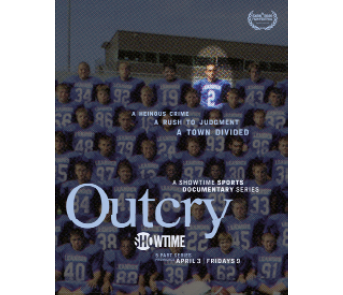
Outcry
Showtime (Currently available on Stan)

Greg Kelley was a high school football star in Texas with scholarship offers from four universities when he was charged with super aggravated sexual assault in 2013. A boy, 4, alleged that 'Greg' placed his 'pee-pee' in the child’s mouth while a second boy also came forward with allegations, but later recanted.
In Texas, a child’s first interview disclosing sexual assault is called an outcry, which is how this five-part documentary takes its name and not from the community, media and social media storm that followed.
The characters are almost clichéd: Kelley is the handsome teenage footballer with dreams of the NFL. His girlfriend, Gaebri, is a beautiful blonde cheerleader who hopes to dance professionally.
As a teen, Kelley suffered a number of setbacks that saw him living with a family whose home in Cedar Park doubled as a daycare centre.
It is at that home that he came in contact with the complainants. One of the boys later recanted his allegations, although it’s unclear if he actually described a sexual assault in the first place, while Cedar Park Police Department and the District Attorney proceeded with two charges in relation to the other boy.
The maximum penalty for super aggravated sexual assault is life imprisonment.The minimum is 25 years without parole.
Kelley was convicted by unanimous jury verdict.
At his sentencing hearing the following day, the judge offered him a deal: waive his right to appeal in exchange for the 25-year minimum. Kelley took it.
From there a number of characters emerged. Jake Bryden, a young man who had never heard of Kelley until after the sentencing, takes it upon himself to be Kelley’s spokesman, advocate and social media campaigner.
Keith Hampton, an experienced attorney famous for securing acquittals on appeal, takes a look at the brief and can’t believe what he sees.
There’s also Shawn Dick, a newly elected District Attorney with concerns about the conduct of his predecessor, the investigation into Kelley and the conviction.
What follows is a re-examination of the case with cameras everywhere. In the courtrooms, in the halls, in the gaol and at the Cedar Park City Council meetings where Kelley’s mob demand action against its police department.
Many of the major players are interviewed including Cedar Park’s police chief who defends his detectives and his department.
Of particular note is the examination into the conduct of trial counsel Patricia Cummings, her forensic decision making and relationship with the family whom Kelley lived with.
True crime documentaries and podcasts often lean towards guilt or innocence in unsubtle ways.
Outcry walks the tightrope right to the final episode.
Stephen Ryan
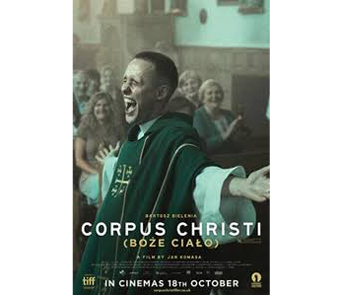
‘Corpus Christi’
Directed by Jan Komasa (2019)

This Polish film (with English subtitles) was nominated for Best International Feature Film at the 2020 Academy Awards and I can see why. It delivers a standout performance and packs an emotional punch that will keep you thinking about it for days, or in my case, weeks.
Based on a true story, the plot is a simple one. Daniel (Bartosz Bielenia) is a 20-year-old convicted criminal detained in a violent juvenile prison. We do not know what he did to end up there. One of his roles in prison is to assist the priest to administer Mass. Unlike the majority of his cohort, he is a spiritual soul who is clearly moved and inspired by the experience. Despite his desire to become a priest on his release he knows that, as a convicted criminal, no seminary will ever accept him. And this is where a mixture of fate, luck, circumstance and connivance converge. Despite his lack of religious education, after leaving prison he cons his way into becoming a priest of a small town in regional Poland.
What Daniel lacks in formal education he makes up for in raw spirit and passion. Needless to say, he is no ordinary priest. He inspires the local parishioners who, it turns out, harbour a dark secret. Daniel’s response to this secret and the fractures that appear in the tight-knit community because of it, thread the film with themes of love, sin, forgiveness, redemption and identity. Which might sound all very predictable but in this director’s hands it is not. It is completely absorbing.
Bielenia’s performance is what makes this film. He is well known in Poland for his work in theatre and it shows. His face, with hooded, piercing eyes, is luminous. It is a face that is straight from ecclesiastical art. It is mesmerising. There is barely a moment in the film when he is not on screen yet his performance is flawless.
There is a lot of subtlety and beauty in this film. The lighting is soft and the colours are pale – it has a twilight feel to it. Every fleeting expression, every tiny twitch of the muscles in Daniel’s jaw speaks volumes. In one of the opening scenes he picks something – a stray thread perhaps - off the altar cloth while setting up for Mass. That fleeting, seemingly insignificant action reveals so much about his character in the most subtle way imaginable.
That said, there is violence. One scene I could not watch. But that aside, this is not what I would describe as a generally violent film. For the most part it is subtle, intriguing and uplifting.
Given the subject matter – a layman successfully replacing a trained priest – the director had great difficulty gaining permission to film in churches in Poland – a country that is more than 90% Catholic. The Church declared the film anti-Christian – specifically anti-Catholic – and prohibited the use of its property. As a result, some of the film was shot in churches in nearby Czech Republic and Slovakia. This gives some context to both the significance of the Church and the priest in the village community in the story and to the society from which this extraordinary film has emerged.
Dark, powerful, absorbing, subtitled foreign films are not everyone’s cup of tea. But this one was mine – I thought it was fantastic.
Sarah Woodland

Nicola Gobbo
Trace: The Informer

In November 2018, the High Court delivered a judgment in AB (a pseudonym) v CD (a pseudonym); EF (a pseudonym) v CD (a pseudonym) [2018] HCA 58 (AB v CD). This decision brought to the public’s attention, for the first time in the case of many people outside Victoria, that a then unnamed criminal defence barrister, later revealed to be Nicola Gobbo, had become a police informer while “purporting to act as counsel” for a number of people who had been convicted of various crimes. As the High Court graphically described the conduct (AB v CD at [10]):
EF's actions in purporting to act as counsel for the Convicted Persons while covertly informing against them were fundamental and appalling breaches of EF's obligations as counsel to her clients and of EF's duties to the court. Likewise, Victoria Police were guilty of reprehensible conduct in knowingly encouraging EF to do as she did and were involved in sanctioning atrocious breaches of the sworn duty of every police officer to discharge all duties imposed on them faithfully and according to law without favour or affection, malice or ill-will. As a result, the prosecution of each Convicted Person was corrupted in a manner which debased fundamental premises of the criminal justice system.
Shortly after the High Court’s decision, a Royal Commission was established1 chaired by the Honourable Margaret McMurdo AC. It is due to report by 30 November 2020.
In somewhat of a coup for the ABC, two journalists, Rachael Brown and Josie Taylor, tracked down Nicola Gobbo to her hiding place in a secret location, at a time when she had yet to give evidence to the Royal Commission. She agreed to give a TV interview which aired on the ABC’s 7.30 program in 2019 and she also participated in a series of audio interviews that were later used extensively in the podcast Trace: The Informer2, an 8 part series that explores this extraordinary course of events, and which is available on ABC Listen or your favourite podcast feed.
The main focus of the two journalists in the podcast appears to be to ascertain why a young woman, who attended an elite private school and the University of Melbourne Law School, and whose uncle was the Governor of Victoria, would behave in such an egregious manner. It is fundamentally an attempt at a psychological profile, dealing with issues such as the consequence of the early death of her father, and her apparent approval-seeking behaviours, among other things.
Amidst the proffered psychological explanations, there is plenty of high drama: international travel to an undisclosed location to meet with Gobbo, which required many route changes to avoid leaving any trail; car chases from Queensland to Victoria, with the police in pursuit, and in the final episode, inexplicable (and, one is expected to infer, nefarious) possible interference with the workings of a barrister’s computer. This is a podcast series where the journalists, and their thoughts and reactions, form a central part of the story.
This is a fast paced and generally entertaining story. It provides considerable background to Gobbo’s relationships with the police (some of which are said to be less than professional), starting with her being charged with drug possession while a law student. It also provides details of some of the cases in which she acted as both counsel and informer, giving rise to the concerns about the convictions identified by the High Court. That process – of unravelling some of those convictions – is well in train.3
Reviewed by Reg Graycar and Victoria Brigden
ENDNOTES
1 https://www.rcmpi.vic.gov.au/about-us.
2 https://www.abc.net.au/radio/programs/trace/episodes/
3 An example was reported in The Age on 30 October 2020: https://www.theage.com.au/national/victoria/second-underworld-conviction-overturned-in-wake-of-lawyer-x-scandal-20201030-p56a0o.html
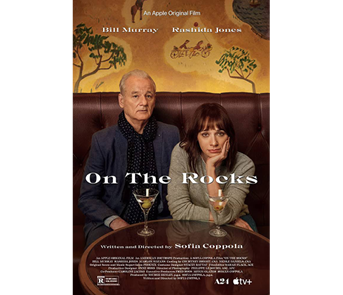
‘On The Rocks’
(2020)

As a fan of the offbeat American romantic-comedy-drama hit Lost In Translation (2003), I was both excited and slightly sceptical when I learned that director Sofia Coppola and actor Bill Murray were reuniting – almost 20 years later – for Coppola’s latest film On The Rocks (released in October 2020 and available on Apple TV).
In it, Murray co-stars as Felix, the self-centred, man-about-town, ageing-Lothario father of Laura (Rashida Jones), a 30-something writer and mother of two young children who fears, as the title suggests, that her marriage is on the rocks. Laura confides in her father that she suspects her husband Dean (Marlon Wayans) is cheating on her with one of his colleagues. Felix immediately takes charge and together, father and reluctant, eye-rolling daughter embark on an odyssey through New York’s classic bars, plush-boothed restaurants and clubs to catch her husband out.
This often implausible, hijinx-filled plot belies the key theme in this movie – a woman’s struggle to define herself and retain her sense of identity, while juggling a marriage, a needy father, two small children and a career.
This theme is explored under the smooth, cool, affluent sheen which is characteristic of Coppola’s work. Laura and Dean live in a magazine-worthy, light-filled apartment with lots of glass and just the right amount of children’s toys and paraphernalia. In one scene Laura wears a Beastie Boys t-shirt while helping her impossibly cute, curly-topped children brush their teeth, in another she wears one which reads ‘The Paris Review’. There are references to gifts in ‘red boxes’ (code for Cartier jewellery) - a step up, no doubt, from gifts in the slightly more common ‘blue boxes’ (code for Tiffany & Co jewellery). These details leave you in no doubt as to the demographic Coppola is targeting. They also make it clear that this is no ordinary wife and mother struggling to find her groove amidst the pressures of modern life.
I applaud any movie director who is prepared to release a film in cinemas during a global pandemic (even if it is also available to be streamed). But, much like 2020 itself, this film is a mixed bag – part love-note to New York, part sleuthing escapade, part meditation on identity and part exploration of father/daughter relationships. It has some genuinely funny and endearing moments (the remote-controlled car scene is classic Ms Coppola, as is the mother at school drop off), while in others it descends into little more than slapstick.
If you have a thing for New York and are missing its streetscapes and old-school restaurants and bars, or are simply looking for something mildly entertaining to watch at home on a Friday or Saturday night that doesn’t require too much mental bandwidth, you won’t be disappointed by this movie. Just don’t expect to find the sprinkling of fairydust which made Lost In Translation the classic it is.
Sarah Woodland